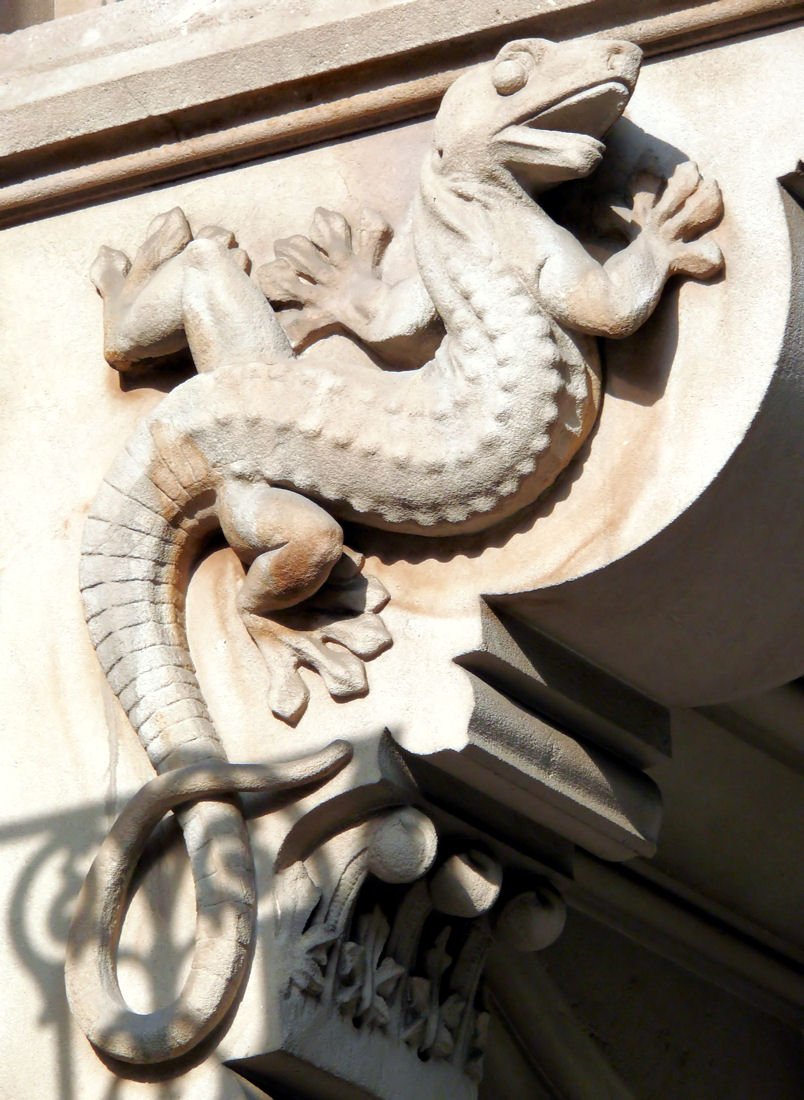#2357. Salamander on Façade: Zoomorphic Decoration in Architectural Composition
The image showcases a detailed architectural decorative element — a sculpted figure of a lizard or salamander, skillfully crafted from stone. This high-relief sculpture is part of a building's façade ornamentation, likely executed in Neo-Gothic or Art Nouveau style.
The reptile is depicted in a dynamic pose, as if climbing up the wall. The craftsmanship reveals meticulous attention to detail: the scaled texture of the skin, curved tail, and expressive head with an open mouth. The sculpture is organically integrated into a rounded niche, creating a sense of movement and adding distinctive expressiveness to the building's façade.
Such zoomorphic motifs were popular in late 19th and early 20th century architecture, especially in Art Nouveau, where natural forms were frequently employed as decorative elements. These details not only adorned the building but often carried symbolic meaning, reflecting the philosophy of the era or the architect's personal preferences.
The light-colored stone material of the sculpture harmoniously complements the overall architectural composition of the building, creating an interplay of light and shadow through its protruding forms.
